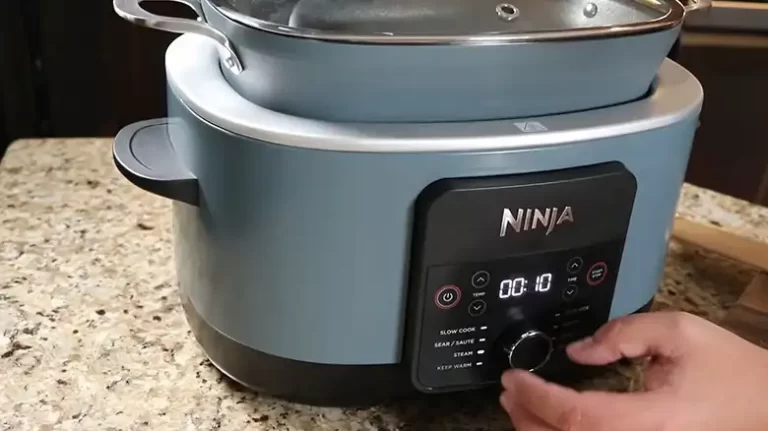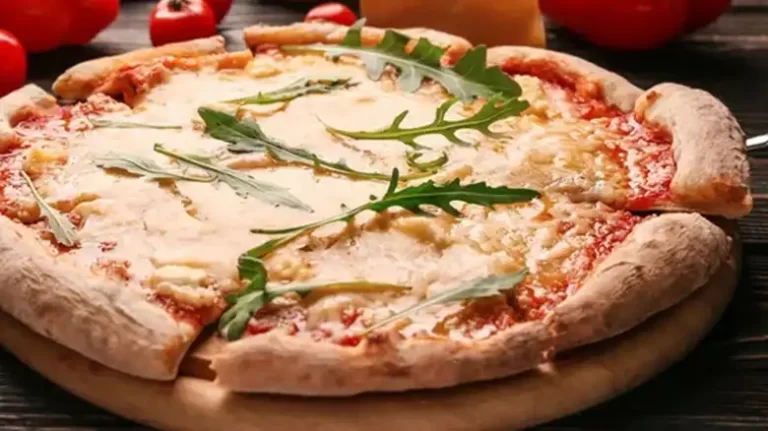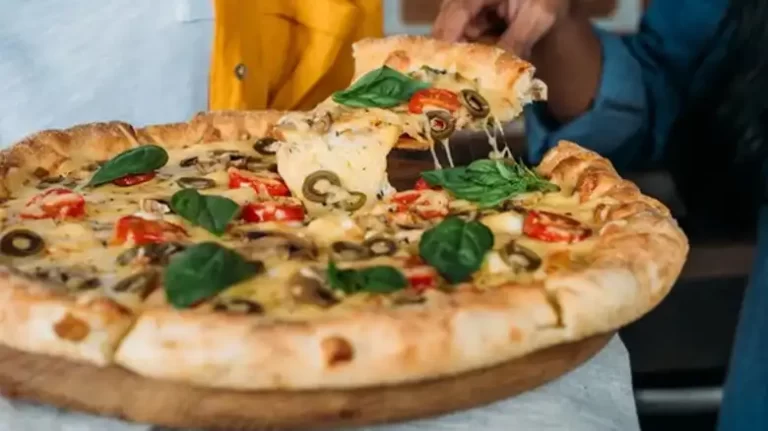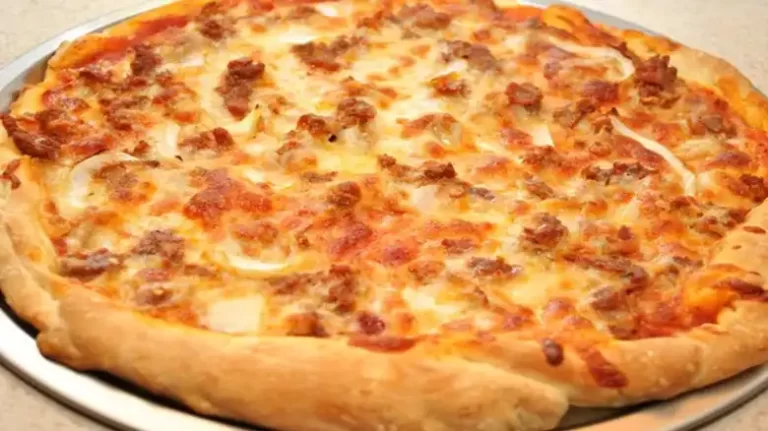How Long to Cook a Pizza at 350 Degrees F
Picture this: You’ve got a delicious pizza waiting to be baked, the oven is preheated to 350°F, and your appetite is growing by the second. But, how long should you cook it to ensure that perfect blend of crispy crust and gooey cheese?
Usually it takes around 15-20 minutes. But sometimes other factors might come in the way. Fear not, because we’re here to unravel the science behind pizza perfection.

Factors Affecting Cooking Time
When it comes to achieving the perfect pizza, knowing the factors that influence cooking time is crucial. Let’s break it down into essential subheadings:
1. Pizza Thickness
The thickness of your pizza crust matters more than you might think. Thin, delicate crusts cook faster, while deep-dish or thick crusts take longer to bake. The thickness of your crust will significantly impact the time your pizza spends in the oven.
2. Toppings and Ingredients
The choice of toppings and ingredients on your pizza can have a notable effect on cooking time. Heavier and denser toppings, such as meat and fresh vegetables, tend to increase the overall cooking time. Conversely, a simpler cheese pizza cooks faster.
3. Oven Type
The type of oven you’re using plays a role in determining how long your pizza should stay in the heat. Conventional ovens and convection ovens distribute heat differently. Understanding your oven’s characteristics will help you adjust the cooking time accordingly.
4. Pizza Size
Size matters when it comes to pizza cooking. Smaller pizzas generally require less time in the oven, while larger ones need more. The size of your pizza can significantly affect the cooking time, so it’s essential to be mindful of this factor.
Preparation and Preheating
When it comes to achieving that perfect pizza at 350 degrees Fahrenheit, preparation and preheating play a significant role. Getting these steps right can be the difference between a mouthwatering masterpiece and a lackluster pie. Let’s delve into the crucial aspects of preparation and preheating:
Preparing Your Pizza
Before you even think about the oven, it’s essential to prepare your pizza properly. This step includes arranging your favorite toppings in a way that they’re evenly distributed, spreading a layer of sauce, and ensuring the cheese is spread consistently.
By taking care to ensure that your pizza is well-balanced in terms of toppings, you’re setting the stage for a pizza that cooks uniformly and tastes delightful.
Preheating the Oven
One common mistake many pizza enthusiasts make is rushing to put their pizza in a cold oven. Preheating your oven is a fundamental step to achieving the desired results. Preheating to 350 degrees Fahrenheit ensures that the pizza starts cooking immediately.
This results in a crust that’s delightfully crispy and cheese that’s perfectly melted. The key is to be patient and allow the oven to reach the right temperature before sliding your pizza onto the rack.
Cooking Methods
When it comes to crafting the perfect pizza, understanding the various cooking methods is essential. The choice of cooking method can significantly impact the taste, texture, and overall quality of your pizza.
In this section, we’ll explore different approaches to cooking pizza at 350 degrees Fahrenheit, each with its own unique characteristics.
1. Baking in a Conventional Oven
Baking your pizza in a conventional oven is the most common and accessible method. It offers a reliable way to achieve a delicious, evenly cooked pizza. Here’s how it works:
Preheating: Begin by preheating your oven to 350°F. It’s crucial to allow the oven to reach the desired temperature before placing your pizza inside. This ensures even cooking from the start.
Placement: Place your pizza on a baking sheet, pizza stone, or directly on the oven rack. Ensure that the pizza is centered for uniform cooking.
Cooking Time: In a preheated 350°F oven, your pizza will typically require around 15-20 minutes. Keep a watchful eye on it to prevent overcooking.
Advantages: Baking in a conventional oven provides a consistent and familiar method for cooking pizza. It’s ideal for most types of pizza and offers a balanced result.
2. Using a Pizza Stone
A pizza stone is a game-changer for pizza enthusiasts who crave that authentic pizzeria taste. Here’s how to use a pizza stone for your 350°F pizza adventure:
Preheating: Place your pizza stone in the cold oven and then preheat it to 350°F. This ensures that the stone absorbs and radiates heat effectively.
Assembly: Carefully transfer your pizza onto the hot pizza stone. The intense heat from the stone cooks the crust quickly, resulting in a crispy base.
Cooking Time: With a preheated oven and pizza stone, your pizza may be ready in just 10-15 minutes at 350°F. Keep a close eye to prevent overcooking.
Advantages: Using a pizza stone mimics the effect of a wood-fired oven, delivering a crispy, restaurant-quality crust. It’s perfect for those who seek an authentic pizza experience.
3. Grilling Your Pizza
Grilling your pizza introduces a smoky flavor and a slightly different texture. It’s a unique approach that adds a delightful twist to your pizza-cooking journey:
Preparation: Preheat your grill to 350°F. It’s essential to ensure the grill grates are clean and lightly oiled to prevent sticking.
Placement: Place your pizza directly on the grill grates. Close the grill lid to trap the heat and let your pizza cook.
Cooking Time: With the high heat of the grill, your pizza may be ready in just 8-12 minutes. The grill’s direct flame adds a smoky flavor to your pizza.
Advantages: Grilling infuses a distinctive smokiness into your pizza, and the quick cooking time preserves the freshness of your toppings. It’s a great choice for those who love the outdoorsy, grilled taste.
4. Wood-Fired Oven
If you have the privilege of owning a wood-fired pizza oven, you’re in for a culinary treat. Wood-fired ovens deliver exceptional results with their extreme heat and rapid cooking times:
Preparation: Ensure your wood-fired oven is heated to its typical high temperature, often exceeding 800°F.
Placement: Quickly slide your pizza into the oven with a pizza peel, placing it directly on the oven floor or on a pizza stone inside the oven.
Cooking Time: Thanks to the intense heat, a wood-fired oven can cook a pizza in under 90 seconds. It results in a blistered, crispy crust and perfectly cooked toppings.
Advantages: The wood-fired oven’s extreme heat and rapid cooking create an unbeatable, authentic pizzeria experience. It’s perfect for pizza purists who want to replicate the taste of Naples in their own backyard.
Checking for Doneness
When you’re standing in your kitchen, eagerly waiting to enjoy that delectable pizza you’re about to create, knowing how to determine if it’s done is crucial.
The perfect balance between a crispy crust and gooey cheese can be achieved by keeping a close eye on the pizza as it bakes at 350 degrees Fahrenheit. Here, we’ll explore how to check for doneness, ensuring your pizza is cooked to perfection.
Visual Clues
Visual cues are your first and most reliable indicator of doneness when baking a pizza. As the pizza bakes, the crust undergoes a delightful transformation.
The edges will begin to turn a lovely golden brown, while the cheese on top will start to bubble and exhibit light browning in spots. Keep a watchful eye through the oven door or window to observe these changes.
Internal Temperature
For those who prefer a more precise method, using a kitchen thermometer can take the guesswork out of determining doneness. The internal temperature of your pizza should reach approximately 200-210 degrees Fahrenheit (93-99 degrees Celsius) to ensure it’s thoroughly cooked.
Insert the thermometer into the center of the pizza, avoiding any toppings or cheese. Once it reaches the desired temperature range, your pizza is ready to be savored.
The Crust Sound Test
Another quirky yet effective technique involves listening to your pizza. As the crust nears its ideal doneness, you’ll notice a subtle change in the sound it produces. When you tap the crust with a utensil or give it a gentle knock, it should sound hollow.
This auditory cue indicates that the crust has crisped up beautifully, and your pizza is most likely ready to be removed from the oven.
Slice and Inspect
If you’re not convinced by visual cues, temperature readings, or sound tests, you can resort to a hands-on approach. Carefully slide a pizza cutter or knife into the center of the pizza and gently lift a slice. Examine the underside of the slice.
It should be a golden brown with a slight crispness to it, ensuring a well-cooked crust. The cheese on top should be melted and bubbling, and the toppings should be cooked to your desired level. If all these elements align, your pizza is ready to be served.
Baking Time Recap
In summary, determining the doneness of your pizza is a crucial step to achieving that perfect slice.
Whether you rely on visual clues, internal temperature readings, the crust sound test, or the slice and inspect method, the goal remains the same – a mouthwatering pizza that’s just the right amount of crispy, cheesy, and delicious.
Frequently Asked Questions
Q1: How long should I bake a standard pizza at 350°F?
A1: For a regular-sized pizza with a standard crust, you should bake it for approximately 15-20 minutes at 350°F. However, factors like thickness, toppings, and oven type can influence the exact time.
Q2: Can I use the same cooking time for both frozen and homemade pizzas at 350°F?
A2: No, the cooking times will differ. A frozen pizza typically comes with specific instructions on the package. Homemade pizzas may need slightly longer or shorter cooking times, depending on their size and toppings.
Q3: What’s the ideal internal temperature for a perfectly cooked pizza?
A3: The internal temperature of a well-cooked pizza should range between 200-210°F (93-99°C). Use a kitchen thermometer to check the temperature in the center of the pizza.
Q4: Is there a universal cooking time for different pizza sizes at 350°F?
A4: The cooking time varies with pizza size. A small pizza may take 10-15 minutes, a medium one around 15-20 minutes, and a large pizza can require 20-25 minutes. Monitor your pizza for doneness based on its size.
Q5: Can I solely rely on visual cues to determine if my pizza is done?
A5: Visual cues are an excellent way to gauge doneness. Look for a golden-brown crust and bubbling, lightly browned cheese at the edges. However, it’s recommended to combine visual cues with other methods for precision.
Q6: What should I listen for when conducting the “crust sound test”?
A6: When performing the crust sound test, you should listen for a hollow sound when you tap the crust. This signifies that the crust has crisped up and likely indicates a well-cooked pizza.
Q7: Can I use the slice and inspect method with all types of pizzas?
A7: Yes, the slice and inspect method can be used with all types of pizzas. It provides a hands-on way to check for doneness by examining the color and texture of the crust, cheese, and toppings.
Q8: How do I avoid overcooking my pizza at 350°F?
A8: To prevent overcooking, regularly check your pizza towards the end of the recommended cooking time. If it looks done based on visual cues or has reached the desired internal temperature, remove it from the oven promptly.
Q9: Are there any special considerations for gluten-free or vegan pizzas when determining doneness?
A9: Gluten-free and vegan pizzas may have slightly different cooking times due to their unique crusts and toppings. Follow the guidelines for these specific types of pizzas or adapt the cooking time as needed.
Q10: Can I use a pizza stone at 350°F to enhance cooking time precision?
A10: Yes, a pizza stone can help achieve a more even distribution of heat, resulting in a well-cooked pizza. It’s a valuable tool to ensure your pizza cooks uniformly and thoroughly.
Conclusion
Perfecting the cooking time for your pizza at 350°F is an art that combines science, personal preference, and a touch of experimentation.
Whether you’re using a conventional oven, a pizza stone, a grill, or a wood-fired oven, understanding the factors that affect cooking time is essential. With the right preparation and a watchful eye, you’ll be enjoying a perfectly cooked pizza every time.
Meta description: Discover the perfect cooking time for your pizza at 350°F. Learn to achieve a crispy crust and gooey cheese with our expert tips.





